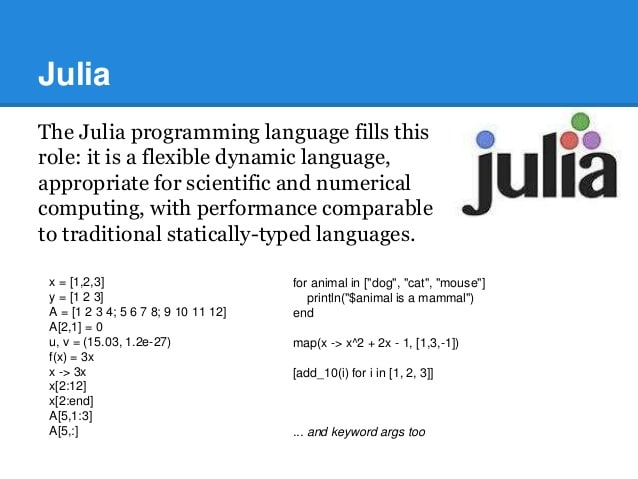When folks look up famous names, like Julia Roberts, they often wonder about the people around them, their family members, and their personal connections. It’s a pretty natural thing to do, wanting to know more about the lives of those who bring stories to life on screen. People are, you know, curious about the whole picture, perhaps even wondering about a "julia roberts brither" or other family ties.
This interest in the personal side of a public figure is, in some respects, a sign of how much their work touches us. We feel a connection, and that makes us want to learn more about where they come from and who they share their life with. Julia Fiona Roberts, for instance, never really thought she would become the most popular actress in America, yet her journey is quite a remarkable one, wouldn't you say?
It’s a fascinating thing, too, that the name "Julia" brings to mind more than just a person. There's also a powerful programming language that shares this very name. This digital Julia is a tool that helps people build all sorts of things, from simple programs to rather complex systems. So, as we talk about Julia Roberts, the person, we might also just touch upon this other "Julia" that makes things happen in the computing world, because it's almost a nice parallel, isn't it?
- Openai Chatgpt Plus Subscription Payment Iran
- Buy Chatgpt Plus In Iran
- Roblox Creator Dashboard
- Chatgpt Plus Iran Payment Method
- Sophierainerome
Table of Contents
- The Story of Julia Roberts - From Smyrna to Stardom
- What Makes Julia Roberts' Path So Compelling?
- Beyond the Actress - The Julia Language Uncovered
- Why is Julia a Go-To for Fast Web?
- Julia's Open-Source Heart and Dynamic Nature
- Getting Started with Julia - A Gentle Introduction
- Expanding Horizons with Julia Data Science
The Story of Julia Roberts - From Smyrna to Stardom
Julia Fiona Roberts, a name many recognize, began her life in Smyrna, Georgia. She was born to Betty Lou Bredemus, and her beginnings were, you know, quite humble, far removed from the bright lights of Hollywood. Her path to becoming a widely celebrated actress was not something she initially planned or even truly imagined. It’s a testament to her spirit and talent that she rose to such widespread recognition, becoming a face known to so many across America and beyond. Her story is, in a way, one of unexpected success and genuine connection with audiences, which is pretty cool.
Personal Details and Early Life - A Look at Julia Roberts' Beginnings
To give you a clearer picture of Julia Roberts, here are some basic details about her early life. These facts help paint a picture of where her journey truly started, before she became a household name. It’s a simple look at her origins, which, you know, often shape who a person becomes. Her roots in Georgia are a part of her story, and it’s interesting to consider how those beginnings shaped her path to fame, really.
| Full Name | Julia Fiona Roberts |
| Birthplace | Smyrna, Georgia |
| Mother's Name | Betty Lou Bredemus |
| Early Ambition | Did not dream of becoming the most popular actress |
Exploring the "Julia Roberts Brither" Query
It's quite common for people, when they look up famous figures, to also wonder about their family members. The search for "julia roberts brither" points to this natural curiosity about her siblings and close relations. However, the information available to us from "My text" focuses on Julia Roberts herself, specifically her birth in Smyrna, Georgia, and her mother, Betty Lou Bredemus, along with her unexpected rise to being a very popular actress. This particular piece of writing doesn't actually give details about a "julia roberts brither." So, while the interest is understandable, our current information keeps its focus on Julia's own personal story and her surprising journey to fame, which is, you know, still quite a tale.
- Teach Me First Honey Toon
- Tatum O Neal Partner
- Chatgpt Plus Subscription Iran Payment Options
- Gloria Torres Of Only Fans
- Robert Paul Schoonover
What Makes Julia Roberts' Path So Compelling?
What is it about Julia Roberts that has made her such a beloved figure in the public eye? Her story, as we’ve touched upon, isn’t one where she set out with a grand plan to become a huge star. Instead, it seems to be a journey that unfolded organically, driven by talent and perhaps a certain genuine quality that audiences connect with. She became the most popular actress in America, which is, honestly, a massive achievement. This kind of success, when it comes from seemingly humble beginnings, often resonates deeply with people. It suggests that with hard work and a bit of luck, anyone can, in a way, achieve something extraordinary, even if they never dreamed of it.
Beyond the Actress - The Julia Language Uncovered
Now, shifting gears a bit, it’s quite interesting that the name "Julia" also belongs to a powerful tool in the computing world. The Julia programming language is something truly special, offering a blend of speed and ease of use that many developers find appealing. It’s open source, which means a big community helps make it better all the time. This language is, you know, pretty versatile, allowing folks to do a whole lot of different things with it. It’s a modern approach to writing computer programs, making it simpler to tackle complex tasks, which is really something to consider.
How Does Julia Help Build Things?
When you think about creating applications or even smaller, focused services on the internet, the Julia language has some neat tricks up its sleeve. It provides ways to handle multiple tasks at once without getting tangled up, which is called asynchronous I/O. It also allows programmers to write code that writes code, a technique known as metaprogramming, which can make things very efficient. For finding and fixing mistakes in programs, it has good debugging tools. Keeping track of what a program is doing is handled by its logging features, and understanding where a program spends its time is made easier with profiling tools. Plus, there's a package manager that helps you get all the extra bits of code you need, making the process of building entire applications and microservices in Julia quite smooth, you know, for real.
Learning the Ropes - A Look at Julia's Basics
For anyone looking to get started with the Julia language, there are plenty of resources to help you along. A comprehensive introductory tutorial can guide you through the fundamental ideas. You'll learn about how to work with operators, which are symbols that tell the computer to do math or comparisons. You'll also get to grips with conditional statements, which let your programs make decisions based on different situations. Working with organized sets of information, often called dataframes, becomes straightforward. This initial guidance helps you to, you know, really grasp the basic concepts of how the language operates.
What Can You Do With Julia Arrays?
Arrays are a core part of many programming tasks, and Julia handles them very well. You can learn how to add new pieces of information to an array, remove existing ones, or even change what’s already there. Finding and getting rid of duplicate items in an array is also something you can do with ease. If you have two different lists of information, you can learn how to combine them into one, or find the items that appear in both lists. These abilities make working with collections of data very flexible, and it’s, like, pretty simple to pick up, honestly.
Why is Julia a Go-To for Fast Web?
One of the standout qualities of the Julia language is its speed. This characteristic makes it particularly well-suited for tasks that need to happen quickly, such as building web applications that respond without delay. The fact that Julia can be used for fast web development means that websites and online services built with it can offer a very smooth experience to users. It's a language that was designed with performance in mind, so, you know, it just naturally handles demanding web tasks with a good deal of efficiency, which is a big plus for anyone building things online.
Julia's Open-Source Heart and Dynamic Nature
The Julia programming language is not just fast and easy to use; it also has an open-source spirit. This means its underlying code is available for anyone to look at, use, and contribute to. This collaborative approach helps the language grow and improve constantly, with contributions from a wide community of developers. Its dynamic nature means you can write code quickly and see results right away, which makes the development process feel more immediate and, you know, pretty interactive. This combination of being open and flexible makes Julia a very appealing choice for many different kinds of projects, allowing for a lot of creative freedom.
Getting Started with Julia - A Gentle Introduction
For those who are already familiar with other programming languages, making the switch to Julia can be a pretty smooth experience. There are resources available that are specifically designed to help people transition from languages they already know. This makes the learning curve feel less steep. Beyond that, a wikibook serves as a friendly introduction to the language, especially for those who might not have a lot of programming background or who code only occasionally. It aims to make the language accessible and understandable, so, you know, it's a good place to start for almost anyone wanting to learn.
Expanding Horizons with Julia Data Science
Julia is also a language that offers significant capabilities for those interested in data science. It provides tools and libraries that allow you to work with large amounts of information, analyze patterns, and build models. This means you can use Julia to explore complex datasets, make sense of numbers, and even predict future trends. For anyone looking to expand their knowledge in the field of data science, Julia presents a powerful option. It helps you to, in a way, really dig into data and pull out meaningful insights, which is a skill that’s very much in demand these days, you know.
This exploration has taken us through the fascinating story of Julia Roberts, touching upon her unexpected rise to widespread popularity, and also introduced us to the powerful and versatile Julia programming language. While the direct information about a "julia roberts brither" was not present in our source text, we've seen how curiosity about public figures leads to such questions. We've also learned about the many practical uses of the Julia language, from building applications to handling data, highlighting its speed, ease of use, and open-source nature. It's clear that both the actress and the language, each in their own way, have made a significant mark.
- Sean Patrick Hayes
- Charlize Theron One Night Stand
- Openai Chatgpt Plus Payment Iran
- Yessica Kumala
- Was George Reeves Related To Christopher Reeves



